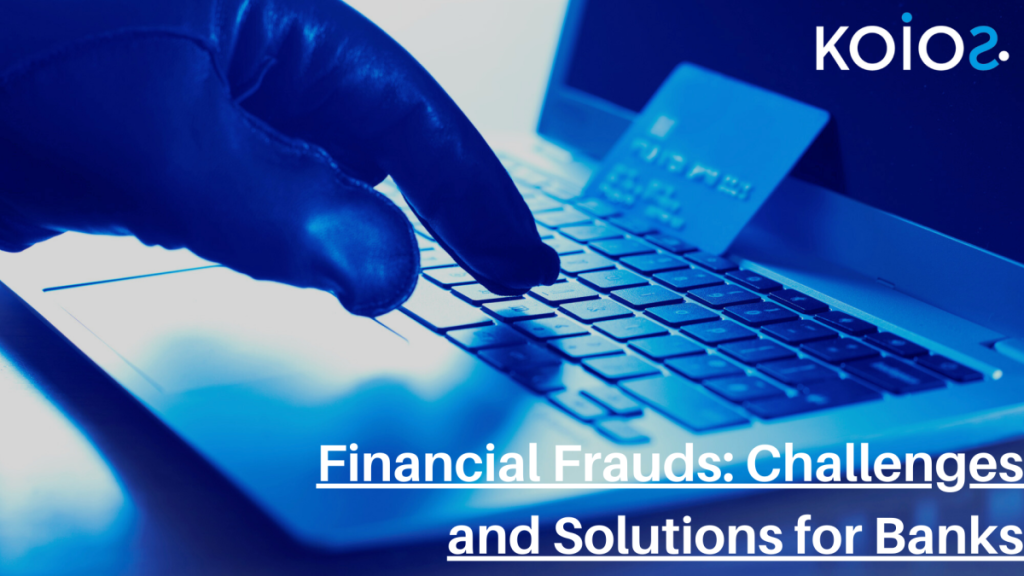
Financial Frauds: Challenges and Solutions for Banks
Fraud in banking is a pervasive issue that affects not only customers but also financial institutions themselves. As technology evolves, fraudsters are employing increasingly sophisticated techniques. In this comprehensive article, we will explore various types of banking fraud, their impacts, and effective strategies for prevention and mitigation.
Types of Banking Frauds: Internal and External
Internal Fraud: Internal fraud involves unethical activities conducted by employees within a financial institution. Common types include:
- Embezzlement: Misappropriation of funds by employees.
- Insider Trading: Unauthorized trading of the company’s securities by employees using confidential information.
- Loan Fraud: Manipulating loan processes for personal gain.
External Fraud: External fraud is perpetrated by individuals outside the institution. Key types include:
- Check Fraud: Counterfeiting or altering checks to deceive banks.
- Card Fraud: Unauthorized use of credit or debit cards.
- Synthetic Identity Fraud: Combining real and fake information to create fraudulent identities.
Impact of Banking Frauds
Frauds in banks have severe consequences, including significant financial losses and reputational damage. According to SEON’s Global Banking Fraud Index 2023, card fraud affected 36% of financial institutions in 2022, a 26% increase from the previous year. In the UK, financial investment fraud accounted for losses of £318 million ($381 million) in 2021, highlighting the financial severity of these crimes.
Key Statistics and Insights:
- 69% of respondents expect an increase in financial crime threats over the next 12 months (Kroll).
- Card fraud affected 36% of financial institutions in 2022, a 26% increase from the previous year (Retail Banker International).
- Financial investment fraud in the UK resulted in losses of £318 million ($381 million) in 2021 (Retail Banker International).
Emerging Fraud Techniques
Fraud-as-a-Service (FaaS): Fraudsters are increasingly using FaaS, which provides tools for conducting sophisticated attacks. These include credential stuffing, bot-driven attacks, and phishing schemes.
Credential Stuffing and Bot Attacks: These involve using stolen credentials to gain unauthorized access to bank accounts. Bots are used to automate these attacks, making them more efficient and harder to detect.
Synthetic Identities: Creating synthetic identities by combining real and fake information is a growing concern. These identities are used to establish credit histories and secure loans, which are then never repaid.
Regulatory and Compliance Challenges
Banks face significant regulatory challenges in combating fraud. Compliance with Anti-Money Laundering (AML) and sanctions regulations is both costly and complex. Kroll’s 2023 Fraud and Financial Crime Report notes that 44% of respondents identified geographic consistency as a top challenge for sanctions compliance.
Technological Solutions
Advanced AML Technologies: Banks are investing in advanced AML technologies to enhance fraud detection and prevention. These technologies help in identifying suspicious activities and preventing fraud but come with challenges such as ensuring data integrity and maintaining privacy protections.
Best Practices for Fraud Prevention:
- Robust Fraud Detection Systems: Implementing comprehensive systems to monitor and detect fraudulent activities.
- Employee Training: Regular training programs to keep employees informed about the latest fraud techniques and prevention strategies.
- Collaboration: Working closely with other financial institutions and regulators to share information and best practices.
Bottom line
The threat of banking fraud is real and growing, with fraudsters becoming more sophisticated in their techniques. Financial institutions must stay vigilant and adopt advanced technologies and best practices to protect themselves and their customers from financial frauds. By understanding the various types of fraud and their impacts, banks can implement effective strategies to mitigate risks and ensure compliance with regulatory requirements.